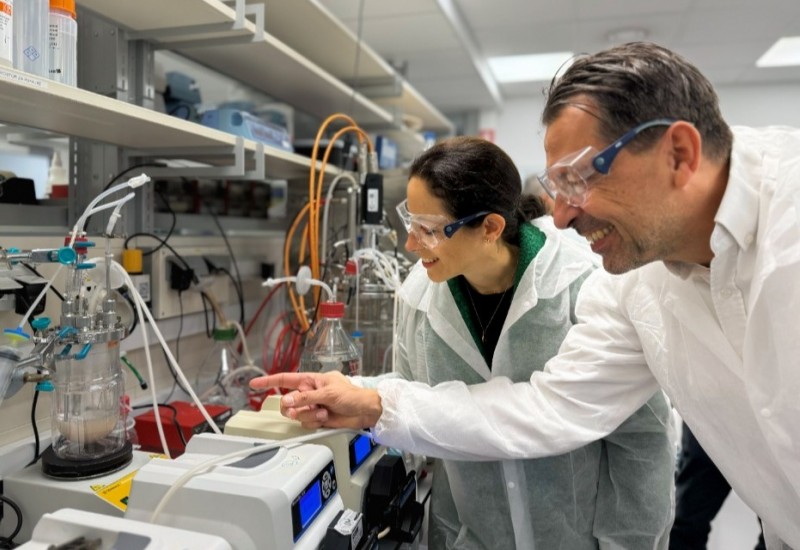Feature article - On the brink of a blockchain breakthrough?
New projects and promising potential chemical industry usages suggest that a much-hyped technology could soon find the mainstream, says Dr Stefan Gürtzgen, global director of industry solution marketing for chemicals at SAP
In October, the Circularise Plastics project group unveiled plans to merge two of the chemical industry’s most promising yet untested technological concepts, blockchain and the circular economy, in a new venture to establish transparent, sustainable processes for plastics manufacturing. This provided a fresh signal that the chemicals and plastics industries may finally be mobilising around blockchain, a technology about which they have been bullish but cautious.
Launched in October, the partnership includes Domo, a polyamides provider, Covestro, a polymer supplier, and Circularise, a blockchain technology start-up that is developing an open-source protocol and decentralised platform for manufacturing supply chains. The partnership’s circular concept involves a seven-step process whereby source material can be followed through a blockchain pathway, ensuring end-to-end product traceability and provenance.
Their ultimate goal is to create a system that encourages suppliers, processors, manufacturers, moulders and brand owners to produce, purchase, use and reuse traceable, sustainable and circular materials via a blockchain-enabled open-standard platform that provides critical information for reverse logistics and take-back of products, materials and components. This would open a pathway to a circular manufacturing model built on the zero-waste principles of reuse, remanufacture and recycle in which waste and pollution are designed out, and products and materials are continually looped back into the value chain.
“Transparency and the notion of a circular economy are strongly in the spotlight, but there are mixed messages when it comes to traceability in plastics. Achieving a single standard for traceability to origin would enable the industry to communicate regarding sustainable practices and attach proof of origin to materials,” explained Domo’s Thomas Nuyts.
How it works
Blockchain is a decentralised digital ledger that stores encrypted data about transactions that occur across a network. The ‘blocks’ in which this data are embedded are disseminated across a network of distributed computers, creating a chain of decentralised yet interdependent records.
Because there is no single authority controlling the ledger, there is no single point of failure from which records or digital assets can be hacked or corrupted. Every participant in the community can independently verify the authenticity of each transactional block, providing a powerful peer-to-peer source of truth for confirming the origins and authenticity of a tangible or intangible asset.
As promising as blockchain is, its path to the mainstream in manufacturing and other applications has been hampered by what McKinsey identifies as an Occam’s razor problem, whereby the simplest solution is probably the best. To this point, it has been difficult for the chemical industry to see a clear-cut business case for using it. As hyped as blockchain has been, however, the Circularise venture suggests that forward-looking chemical companies still view it as a compelling solution in several use cases.
In R&D, for instance real-time information-sharing via the blockchain construct protects IP in open innovation networks or consortia. Companies can collaborate without compromising sensitive data, privacy or confidentiality. In procurement, blockchain enables users to track and authenticate the origin and custody chain of raw materials with blockchain enables companies to follow ethical corporate practices (no ‘conflict’ materials or materials associated with child labour, unfair trade practices, etc.) and to comply with any relevant regulatory standards or requirements (sustainability, etc.).
In production and asset management, blockchain enables multiple entities along a supply chain - raw material suppliers, manufacturers, processors, service providers and others - to share information and to track an asset’s entire history throughout its lifecycle, to prove maintenance and use of original spare parts, for example, in support of warranty or insurance claims, to verify ownership, book value, etc., and to provide a single source of truth for pay-per-use business models.
Quick retrieval
In addition, blockchain can speed a plant’s recovery from a disaster, enabling the plant owner to readily access and retrieve records for warranty claims and the like. And, because blockchain records are tamper-evident, key operational data like process variables and machine operating conditions saved to the chain just before an accident could prove valuable in investigating root causes.
In terms of supply chain management, blockchain enables chemical companies to become ‘prosumers’ of energy, whereby they use it to trade power securely and efficiently, selling any excess electricity they produce and/or purchasing electricity when their plants require it.
For companies that engage in international trading and shipping, finally, blockchain can facilitate document exchange and track changes in product ownership. Using it to track and trace the physical integrity of products (as BASF is doing with its smart pallet start-up) helps to identify physical damage to products or pallets while also preventing counterfeiting, a major issue in some chemical markets.
As viable as blockchain appears for these and other applications, the chemical industry still has yet to embrace it on a broad scale, due in large part to ongoing uncertainty about data security, privacy and the ownership of blockchains and their constituent nodes, as well as concerns about data management, scalability and interoperability, a lack of compelling use cases and a general reluctance among participants to undertake risk-sharing partnerships built around blockchain concepts.
With more initiatives like Circularise, those barriers could quickly disappear, and in a couple years, we could be talking not about the chemical industry’s reluctance to embrace blockchain, but rather about their race to implement it.















